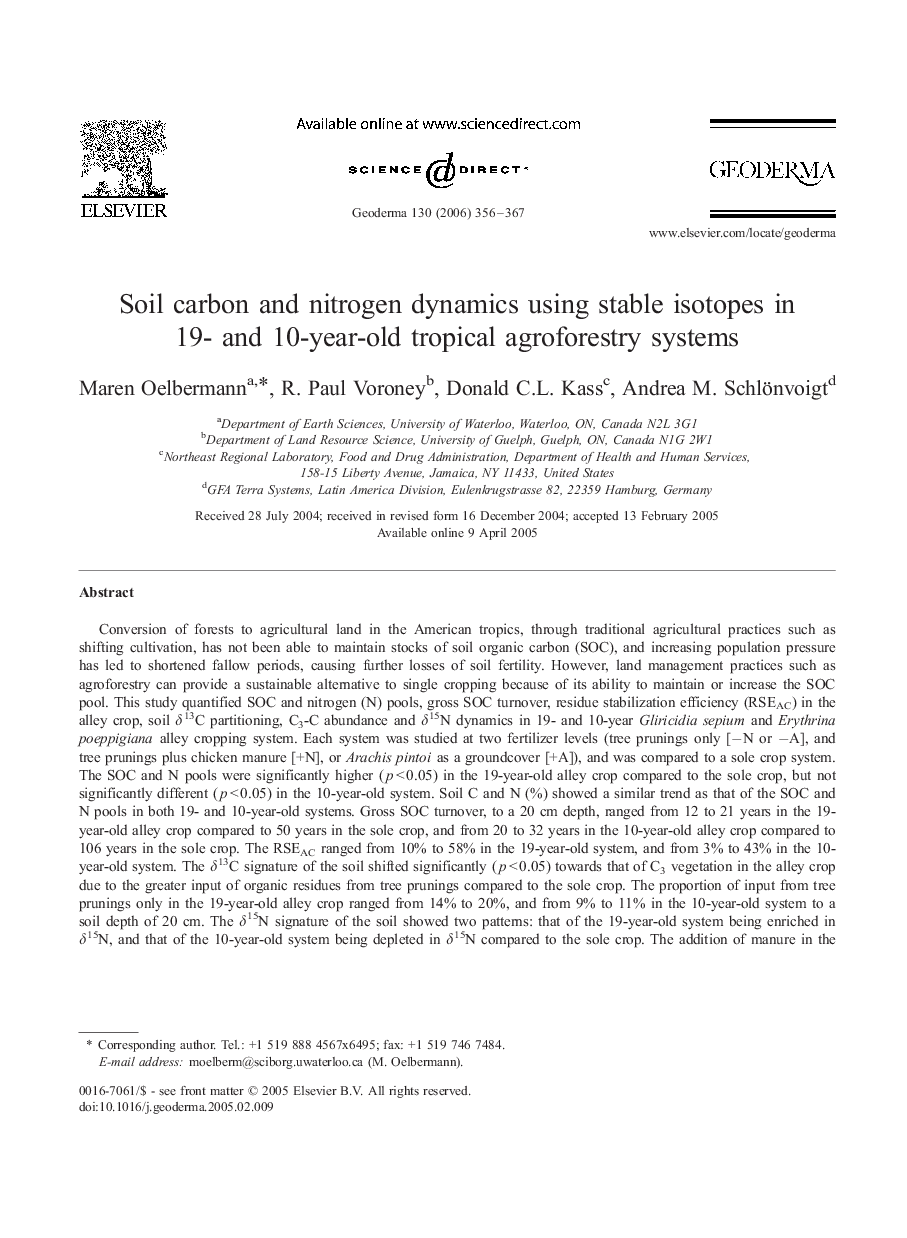| Article ID | Journal | Published Year | Pages | File Type |
|---|---|---|---|---|
| 4575754 | Geoderma | 2006 | 12 Pages |
Conversion of forests to agricultural land in the American tropics, through traditional agricultural practices such as shifting cultivation, has not been able to maintain stocks of soil organic carbon (SOC), and increasing population pressure has led to shortened fallow periods, causing further losses of soil fertility. However, land management practices such as agroforestry can provide a sustainable alternative to single cropping because of its ability to maintain or increase the SOC pool. This study quantified SOC and nitrogen (N) pools, gross SOC turnover, residue stabilization efficiency (RSEAC) in the alley crop, soil δ13C partitioning, C3-C abundance and δ15N dynamics in 19- and 10-year Gliricidia sepium and Erythrina poeppigiana alley cropping system. Each system was studied at two fertilizer levels (tree prunings only [−N or −A], and tree prunings plus chicken manure [+N], or Arachis pintoi as a groundcover [+A]), and was compared to a sole crop system. The SOC and N pools were significantly higher (p < 0.05) in the 19-year-old alley crop compared to the sole crop, but not significantly different (p < 0.05) in the 10-year-old system. Soil C and N (%) showed a similar trend as that of the SOC and N pools in both 19- and 10-year-old systems. Gross SOC turnover, to a 20 cm depth, ranged from 12 to 21 years in the 19-year-old alley crop compared to 50 years in the sole crop, and from 20 to 32 years in the 10-year-old alley crop compared to 106 years in the sole crop. The RSEAC ranged from 10% to 58% in the 19-year-old system, and from 3% to 43% in the 10-year-old system. The δ13C signature of the soil shifted significantly (p < 0.05) towards that of C3 vegetation in the alley crop due to the greater input of organic residues from tree prunings compared to the sole crop. The proportion of input from tree prunings only in the 19-year-old alley crop ranged from 14% to 20%, and from 9% to 11% in the 10-year-old system to a soil depth of 20 cm. The δ15N signature of the soil showed two patterns: that of the 19-year-old system being enriched in δ15N, and that of the 10-year-old system being depleted in δ15N compared to the sole crop. The addition of manure in the 19-year-old system has enriched the soil δ15N and in the 10-year-old system the soil was depleted due to the N2-fixing groundcover A. pintoi.
